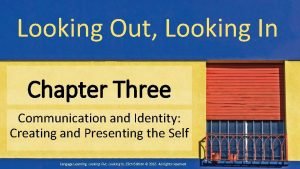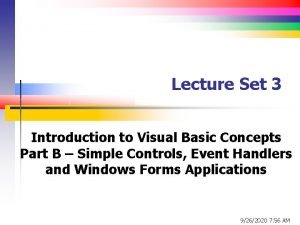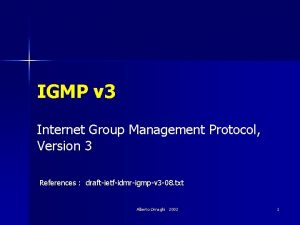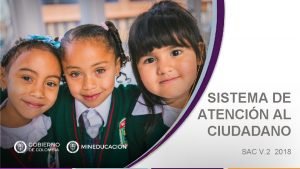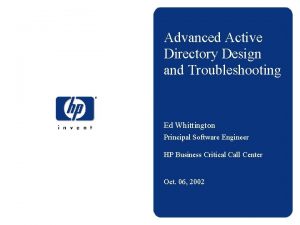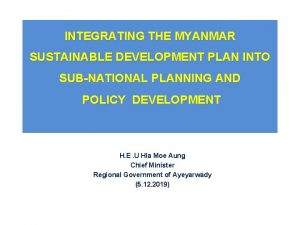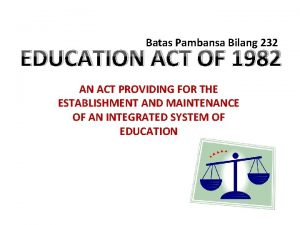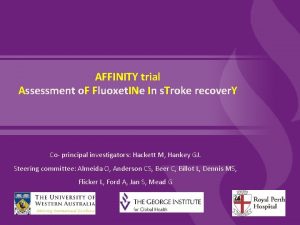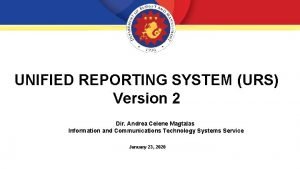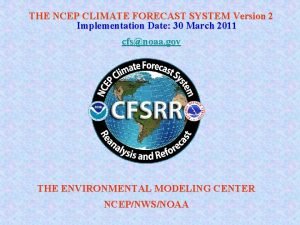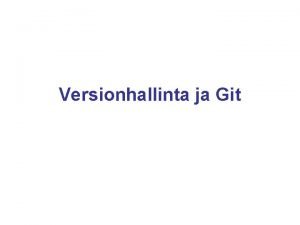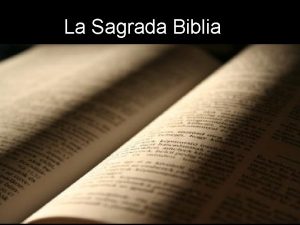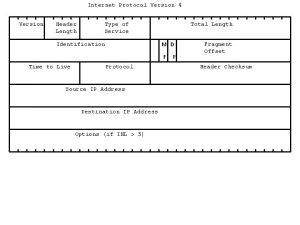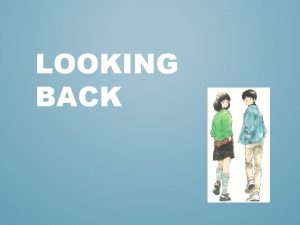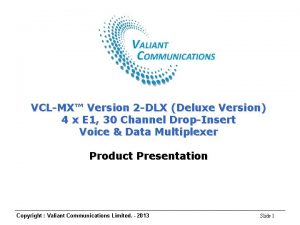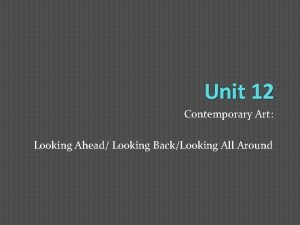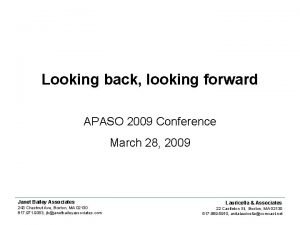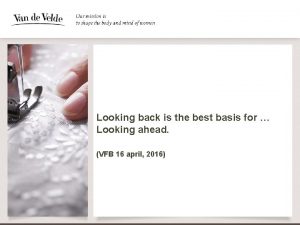KINDERGARTEN VERSION 2 0 LOOKING AT KINDERGARTEN THROUGH





















- Slides: 21

KINDERGARTEN: VERSION 2. 0 LOOKING AT KINDERGARTEN THROUGH A NEW LENS

A New Emphasis on Kindergarten: Why? Pre-Kindergarten classes which adhere to evidenced based practices indicative of high quality are growing in number in public schools. (http: //www. mde. k 12. ms. us/docs/communications-library/2017 -elc -peer-report---170705. pdf? sfvrsn=2) Reports generated from the Mississippi Department of Education on kindergarten readiness as measured by the MKAS assessment indicate children are entering kindergarten at various levels of readiness. (http: //www. mde. k 12. ms. us/docs/student-assessment/kreadiness-sbe-preso-jan 2017. pdf? sfvrsn=2) Kindergarten guidelines developed by the Mississippi Department of Education in 1984 and revised several times, with the latest revision in 2015, will be used in school auditing visits related to accreditation. Over the years, kindergarten classes in many school districts have moved away from following the guidelines in daily classroom application. New staff have been employed since the guidelines were implemented and have not received adequate professional development in implementing guidelines related to curriculum, materials and assessment.

Picture with Caption Layout Caption

Curriculum Standards shall be used at a minimum to guide instruction: Section IV A. #2 CCR. RF. 1. Demonstrate understanding of the organization an basics features of print. RF. K. 1 b Recognize that spoken words are represented in written language by specific sequences of letters. (MDE, 2016)

Curriculum Standards shall be used at a minimum to guide instruction: Section IV A. #2 K. O. A. 1. Represent addition and subtraction with objects, fingers, mental images, drawings, sounds (e. g. claps), acting out situations, verbal explanations, expressions, or equatations. K. CC. 6. Identify whether the number of objects in one group is greater than, less than, or equal to the numbers of objects in another group, e. g. by using matching and counting strategies. K. G. 5. Model two and three dimensional shapes in the world by building shapes from components (e. g. sticks and clay balls) and drawing shapes.

Curriculum Standards shall be used at a minimum to guide instruction: Section IV A. #2 VA: Cr 1. 1. K Generate and conceptualize artistic ideas and work. a. Engage in exploration and imaginative play with materials.

Section IV. Curriculum, Materials, and Assessment #3 Learning Centers Dramatic Play Center Children are provided opportunities to improve comprehension and increase vocabulary. Children practice executive function skill development such as taking turns, organizing steps to complete a task and staying on task. Block Center Art Center Children gain opportunities to apply mathematic concepts such as recognition of shapes, counting, comparing, and determining the difference in two and three dimensional shapes. Vocabulary development and learning communication skills through conversation also occurs. Children practice fine motor skills, hand –eye coordination, experiment with various media to express their understanding of stories and/or characters in books they read. The art center also provides children opportunities to plan and complete tasks, which leads to improved executive functioning. Children also practice executive skills such as patience, focus and completing a task.

Daily Use of Learning Centers: Section IV. Curriculum, Materials, and Assessment Instructional delivery shall be organized primarily using learning centers. A minimum of 3 containing books, manipulatives, and creative and materials shall be organized, arranged, and labeled so that they are accessible to children. (pg. 17 in MS Kindergarten Guidelines) • All centers should include non-fiction and fiction books, writing materials and creative arts materials that are appropriate to children’s developmental status • Centers should integrate thematic unit concepts….

Timing is Everything Time Constraints: Every child enrolled in a kindergarten program should be engaged in learning center activities for the purpose of learning and mastery of performance standards for a minimum for 120 minutes a day. (pg. 18, MDE Kindergarten Guidelines) A study conducted in North Carolina’s First School involved observers conducting a time study twice a year in Pre. K-third grade (Ritchie and Gutman). The Snapshot data revealed: 2 hours of the day spent in whole group instruction 100 minutes or 25% of the day in transitions 16 minutes or 6% of the day in meaningful conversations

How to Schedule More Learning Time q Shifting large group time 12 minutes a day to center or small group time = 60 minutes per week (5 days x 12 minutes) which results in 2+ weeks more of instructional time a year. According to the National Association for the Education of Young Children (NAEYC), requiring kindergarteners to sit for long periods of time is counter productive. q Break up the 30 minute whole group time into 2 fifteen minute blocks at the beginning of the year and increase the time slowly, allowing the children to guide the increase in time based on the increased focus time they exhibit.

How to Schedule More Learning Time q Reducing transition time by 5%=20 minutes per day, 5 days a week= 100 additional minutes a week=4 more weeks of instructional time per year. Examples of transitions “gone wrong” are: 1. restricting “center time” to a 15 minute block and everyone moves to another center. of time at which a bell rings 2. spending too much time in line. 3. requiring students to sit without talking while waiting …. for the bus or walking to the cafeteria (examples). 4. confusion in the classroom due to the teacher’s lack of planning and preparation.

c. Time Constraints: Every child should be engaged in learning center activities for the purpose of learning and mastery 120 minutes per day(pg. 18) Standards remain the same; the instructional strategy changes from teacher directed to teacher guided. In addition to teacher guided instruction, children have opportunities to guiding their own learning experience (EX: Teacher says to child: “Please show and tell me what you are going to do with the blocks. ”) Teachers use a variety of instructional strategies such as encouraging children, offering specific feedback, modeling skills or positive behavior, giving a cue or hint, telling information directly and giving directions. (Developmentally Appropriate Practice in Early Childhood Programs, NAEYC, Third Edition, 2013)

Break

High Quality Kindergarten Today https: //www. youtube. com/watch? v=h. PZV-2 Xhkd. I

C. Assessment Individual Screening Assessments: Documentation: It is recommended that assessment of kindergarten skills be documented through use of a variety of techniques and procedures to include: checklists, performance scales, portfolios of children's work, anecdotal records, observational reports, video and audio tape recordings, experience charts, photographs, and informal tests. Needs Assessment: A continuous evaluation through use of a variety of techniques, procedures, and tools shall be used to determine individual students’ social, emotional, and academic enrichment needs. The evaluation shall be based on the learning outcomes in the required curriculum standards. Schools must conduct vision and hearing screenings for all kindergarten students within the first 30 days of enrollment. By fall of 2018, a comprehensive health the Mississippi Department of Education, and referrals are required for all kindergarten students. v Standardized Testing: All kindergarten students are required to participate in the state-approved kindergarten readiness assessment. MDE Kindergarten Guidelines pg 19

Supporting Kindergarten Teachers in Implementing Kindergarten Version 2. 0 B. Educational Materials (pg. 18 MDE Kindergarten Guidelines)

Classroom Materials Purchasing Plan Guidelines “ The district shall spend a minimum of $1, 000 per classroom per year on instructional supplies. The money is in addition to the Educational Enhancement Fund monies allocated to each teacher. Educational materials shall reflect the instructional needs in implementation of learning centers. Students should have access to technology on a regular basis. What does it take to “ make” a learning center as defined by MDE and shown in the video? 1. Furniture that creates a physical learning space that is distinct from other areas in the room (storage, chairs and tables to accommodate 4 -6 children), area rug 2. Various educational resources that allow for children to practice skills and create and solve problems that promote application of the skills and learning standards.

Approximate Costs Basic Furniture: Curriculum Materials: 2 rectangle tables @$199. 00 each Evidence-based curriculum $3. 100 2 child size chairs and table @ $299. 95 Set of wooden blocks 2 additional child size chairs@ $109. 95 Dramatic play materials 1 storage shelf @ $179. 99 Art (consumables and permanent) $ 1, 509. 16 Reading pillows @ $159. 99 Technology: The amount of basic furniture needed will depend on the number of children in the class. desk top/laptop/ 4 tablets $958. 60 $1, 980. 20 $2, 111 c. Furniture shall be of an appropriate height, and will vary to meet the needs of all children. Tables and chairs shall be the primary type of student furniture. pg 13 Possible funding sources: ESSA funds

Additional Materials/Dollar Tree All items are $1. 00 Plastic Food SKU: 237311 Play dough SKU: 226166 Plastic Action Figures SKU: 175906 Dough cutters SKU: 237563 Hot Wheels Cars SKU: 16337 Foam Puzzles –Letters and Numbers Air Force Toy Jets SKU: 987531 SKU: 259200 Art Caddy SKU: 252645 Assorted Board Games SKU: 186284 Art Pad SKU: 960208 Character Playing Cards SKU: 214750 Glue Sticks (4 pack) SKU: 26598 Dramatic Play Boas SKU: 239503 Stamp ink pads SKU: 24941 Toy ATVs SKU: 187272 Craft Pom-Poms SKU: 188747 Glue-2 CT SKU: 977526 Crayons-36 CT SKU: 205232

Teacher Support Kindergarten Teacher Training: June 11 -12 Desoto County /School District Central Office June 14 -15 Tupelo/ ICC Belden July 23 -24 Meridian July 26 -27 Hattiesburg/Trent Lott Center MDE Resources: http: //www. mde. k 12. ms. us/ESE/links/response-to-interventionteacher-support-team/family-guides-for-student-success http: //www. mde. k 12. ms. us/docs/elementary-education-and-reading-library/fgss_practicaltips_20170531153302_64801. pdf? sfvrsn=2 http: //www. mde. k 12. ms. us/docs/secondary-education/7 -28 -17_kindergarten-integratedcenters-for-literacy-with-standards_20170728122653_410076. pdf? sfvrsn=2

Contact Information Dr. Jill Dent, Early Childhood Director, MDE, 601 -359 -2586 Joyce Greer, Early Childhood Instructional Specialist, MDE, 601 -359 -2942 Dr. Cathy Grace, Co-Director, Graduate Center for the Study of Early Learning, UM/North MS Education Consortium, 662 -312 -1395
 Identity management looking out looking in
Identity management looking out looking in Looking out looking in chapter 9
Looking out looking in chapter 9 Through one man sin entered the world, and through one man
Through one man sin entered the world, and through one man Furcation involvement classification
Furcation involvement classification Advantages of through and through sawing
Advantages of through and through sawing Night of the scorpion full poem
Night of the scorpion full poem Vb version
Vb version Igmp version 2 vs 3
Igmp version 2 vs 3 Sac sedboyaca
Sac sedboyaca Ad / sysvol version mismatch,enforced
Ad / sysvol version mismatch,enforced Statement of comprehensive income
Statement of comprehensive income Evalaze
Evalaze Myanmar sustainable development plan myanmar version
Myanmar sustainable development plan myanmar version Education act of 1982
Education act of 1982 Ine trial
Ine trial Ursv2
Ursv2 Chemalert
Chemalert Climate forecast system version 2
Climate forecast system version 2 Dd 577
Dd 577 Versionhallinta
Versionhallinta El autor secundario de la biblia es
El autor secundario de la biblia es No protocol version header
No protocol version header
